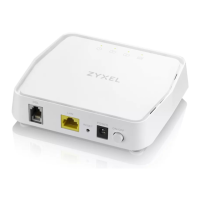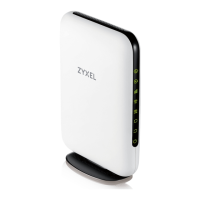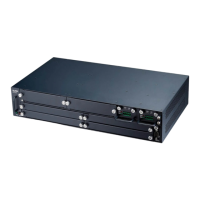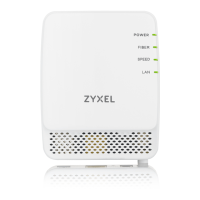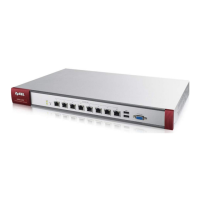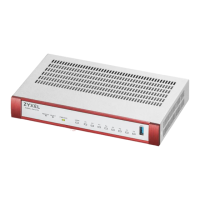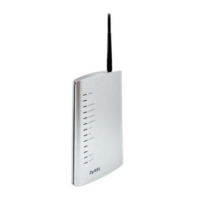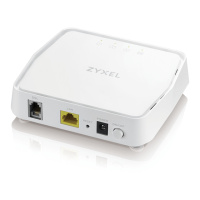
Do you have a question about the ZyXEL Communications VMG4005-B50B and is the answer not in the manual?
| WAN Interface | VDSL2 |
|---|---|
| LAN Interface | Gigabit Ethernet |
| Ethernet Ports | 4 |
| Wireless | Yes |
| Wireless Speed | Up to 300 Mbps |
| Frequency Band | 2.4 GHz |
| Antenna Gain | 5 dBi |
| VDSL2 Support | Yes |
| Product Type | Wireless Router |
| Type | Router |
| Device Type | Wireless Router |
| Ports | 4 x RJ-45 |
| WAN Port | 1 x DSL port |
| DSL Port | 1 x DSL port |
| Wireless Standard | 802.11n |
| Antenna Type | Internal |
| Security | WPA2 |
| Annex | Annex A, Annex B |
Explains how warnings and notes are displayed in the manual.
Explains text formatting and navigation conventions used in the guide.
Lists generic icons used to represent devices and concepts in illustrations.
General description of the VMG, its function, and capabilities.
How to connect the VMG for internet access using DSL.
Outlines the methods for managing and configuring the VMG.
Recommendations for secure and effective VMG management.
Overview of the VMG's physical hardware components.
Details the components and indicators on the front panel of the VMG.
Explains the status and meaning of the VMG's LED indicators.
Describes the connection ports and controls on the bottom panel of the VMG.
Instructions on how to use the reset button to restore factory defaults.
Provides instructions and specifications for mounting the VMG on a wall.
Introduces the Web Configurator as the primary management interface.
Step-by-step guide on how to access the VMG's web interface.
Describes the different sections of the Web Configurator interface.
Details the elements and functions of the title bar in the Web Configurator.
Explains the menu items in the navigation panel for VMG configuration.
Introduces the Status screen for viewing VMG and interface status.
Describes how to view network connection status and warning messages.
Defines LAN and its purpose in connecting networking devices.
Lists tasks related to LAN setup and UPnP configuration.
Provides background information on IP addresses and UPnP.
Steps to configure the LAN IP address and subnet mask of the VMG.
Explains Universal Plug and Play and its function in network connectivity.
Guide to enabling UPnP on Windows 7 for VMG connectivity.
Guide to enabling UPnP on Windows 10 for VMG connectivity.
Introduces VMG logging capabilities and alert management.
How to view system logs using the System Log screen.
Explains alerts, logs, and the syslog protocol.
Details how to view, filter, and export system logs.
Introduces monitoring network traffic status for WAN and LAN interfaces.
How to view WAN and LAN traffic statistics.
Explains how to view traffic statistics for the WAN interface.
Explains how to view traffic statistics for the LAN interface.
How to view detailed DSL connection statistics and parameters.
Introduces system settings for naming the VMG.
Details how to set the Host Name and Domain Name for the VMG.
Introduces viewing and managing user accounts for VMG login.
Describes the screen for managing user accounts and their settings.
Instructions for adding or editing user accounts and their privileges.
Explains how remote management controls access to the VMG.
Details configuration of services for remote access via WAN/LAN.
How to view and manage trusted IP addresses for remote access.
Steps to add a specific IP address to the trusted list for remote access.
Introduces system settings including time, password, and name.
Instructions for configuring the VMG's date and time.
Explains configuration of log sending and recording.
Details how to set up syslog logging and select active logs.
Explains how to download and upload new firmware for the VMG.
Steps for performing a firmware upgrade using the Web Configurator.
Introduces backing up, restoring, and resetting device configurations.
Steps to save current settings to a file or restore from a backup.
How to remotely restart the VMG without power cycling.
Introduces diagnostic features to identify VMG problems.
How to use Ping, TraceRoute, and NsLookup tools.
Explains CFM and its role in discovering connectivity faults.
Details how to perform ping, traceroute, and DNS lookup tests.
Solves problems related to device power and LED status.
Addresses issues with accessing and logging into the VMG.
Troubleshooting steps for problems with internet connectivity.
Solves issues related to UPnP detection after VMG reboots.
Lists details to prepare before contacting customer support.
Lists Zyxel offices and contact details by region.
Copyright notice and publication rights for the manual.
Zyxel's liability disclaimer for product usage.
FCC compliance statements for products used in the USA.
Compliance statements for Canada (ICES and ISED CS-03).
Information regarding EU compliance and national codes.
General safety precautions for product usage.
Detailed safety warnings regarding device usage and environment.
Power consumption requirements and environmental compliance for EU market.
Safety warnings specific to Taiwan regulations.
Defines common symbols used on the product and in the manual.
Details the warranty terms and conditions for Zyxel products.
Lists Zyxel trademarks and product registration information.
Information on free software licenses included with the product firmware.

